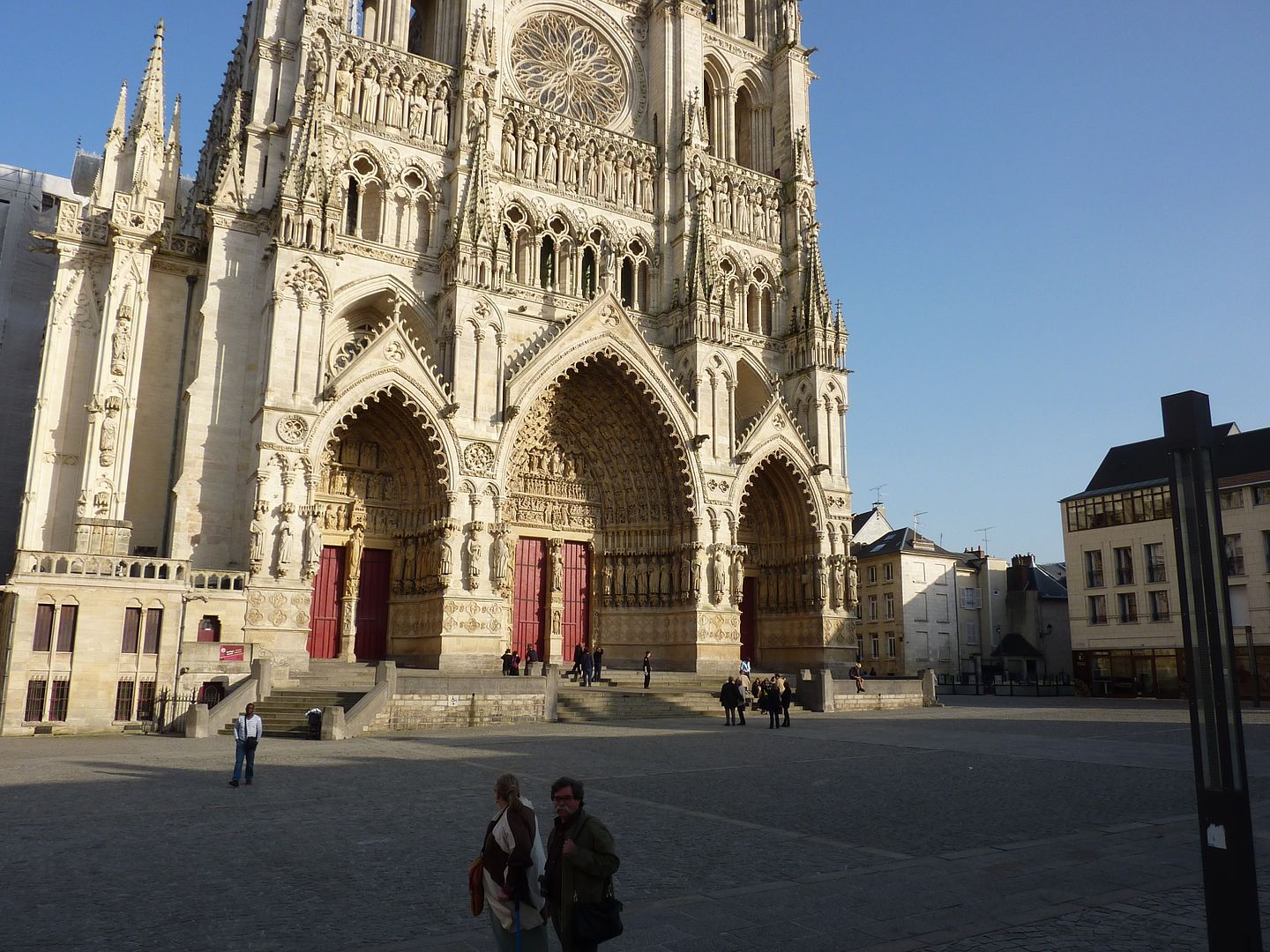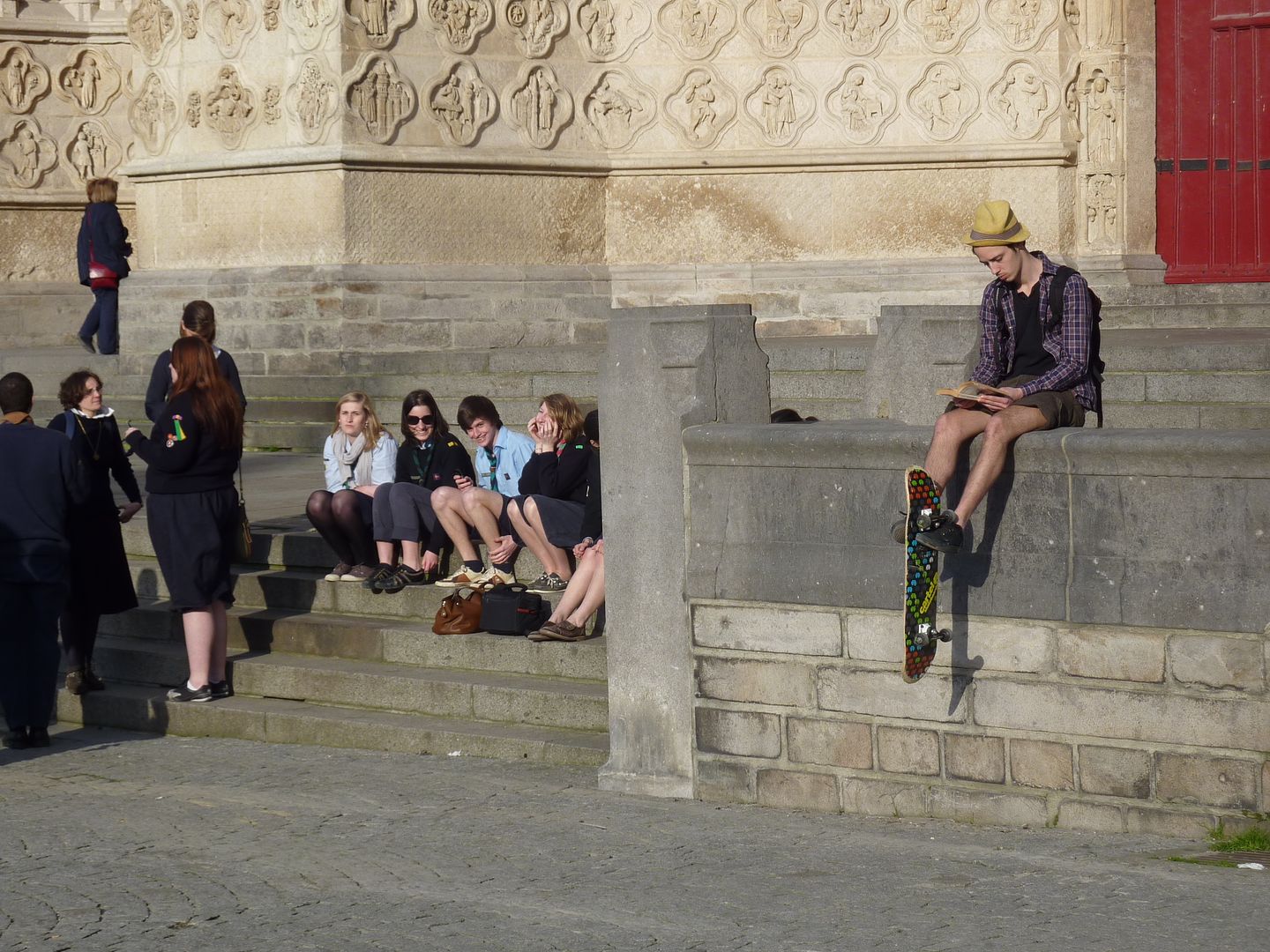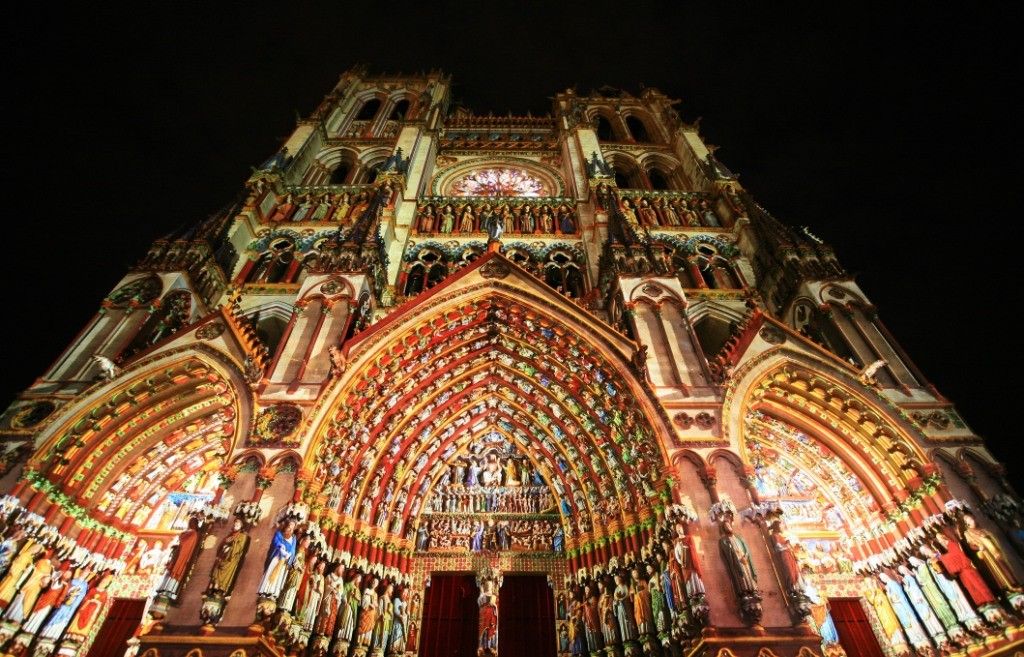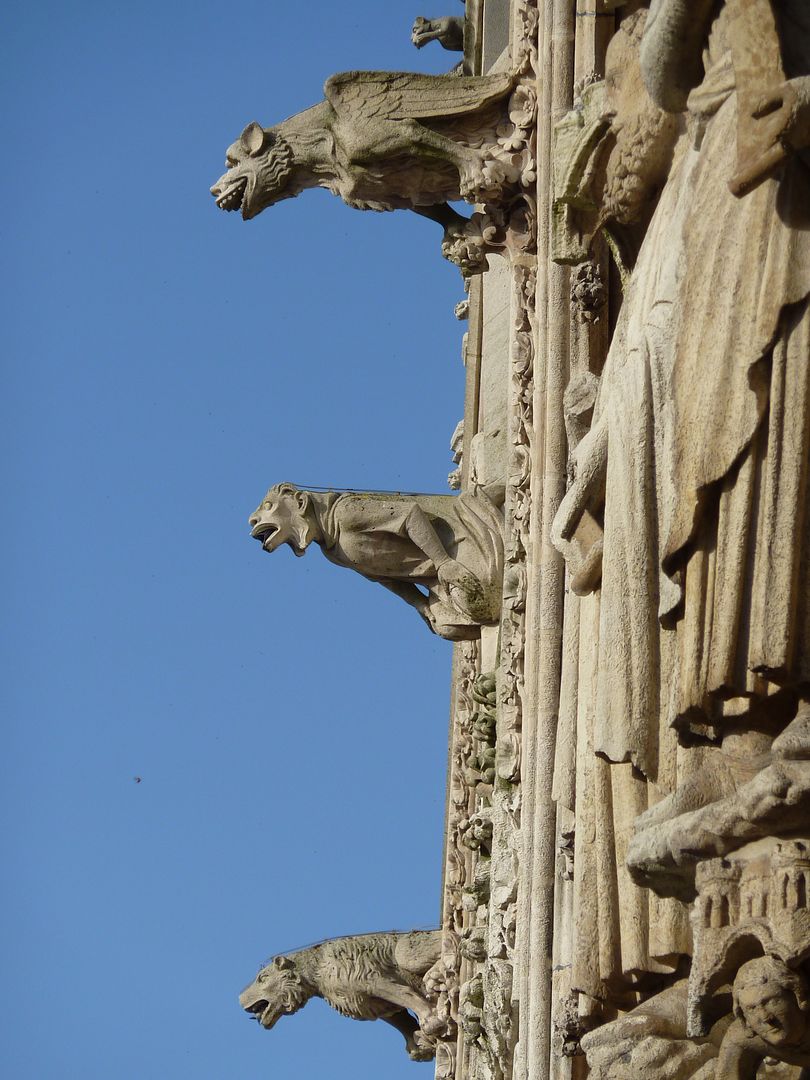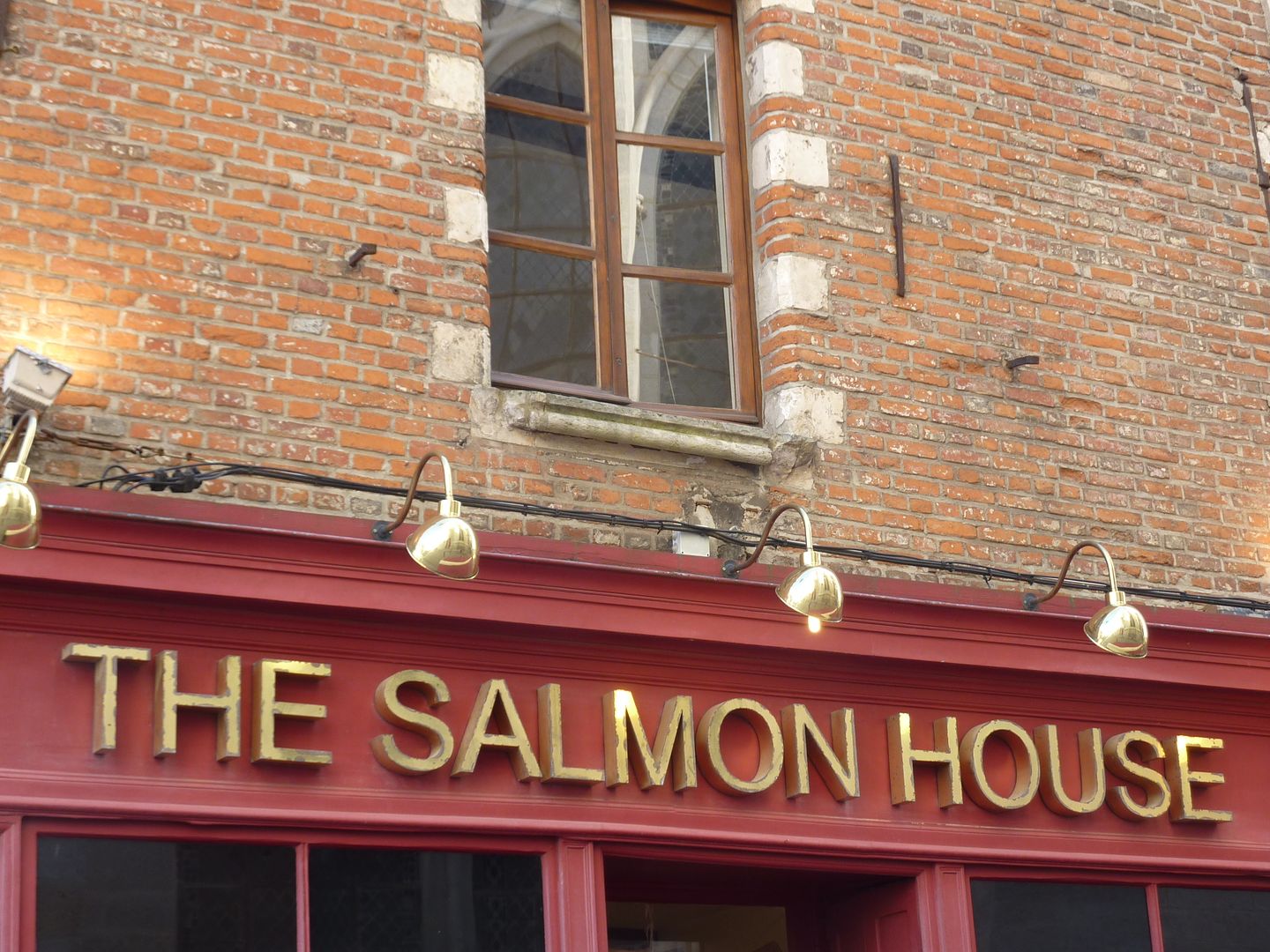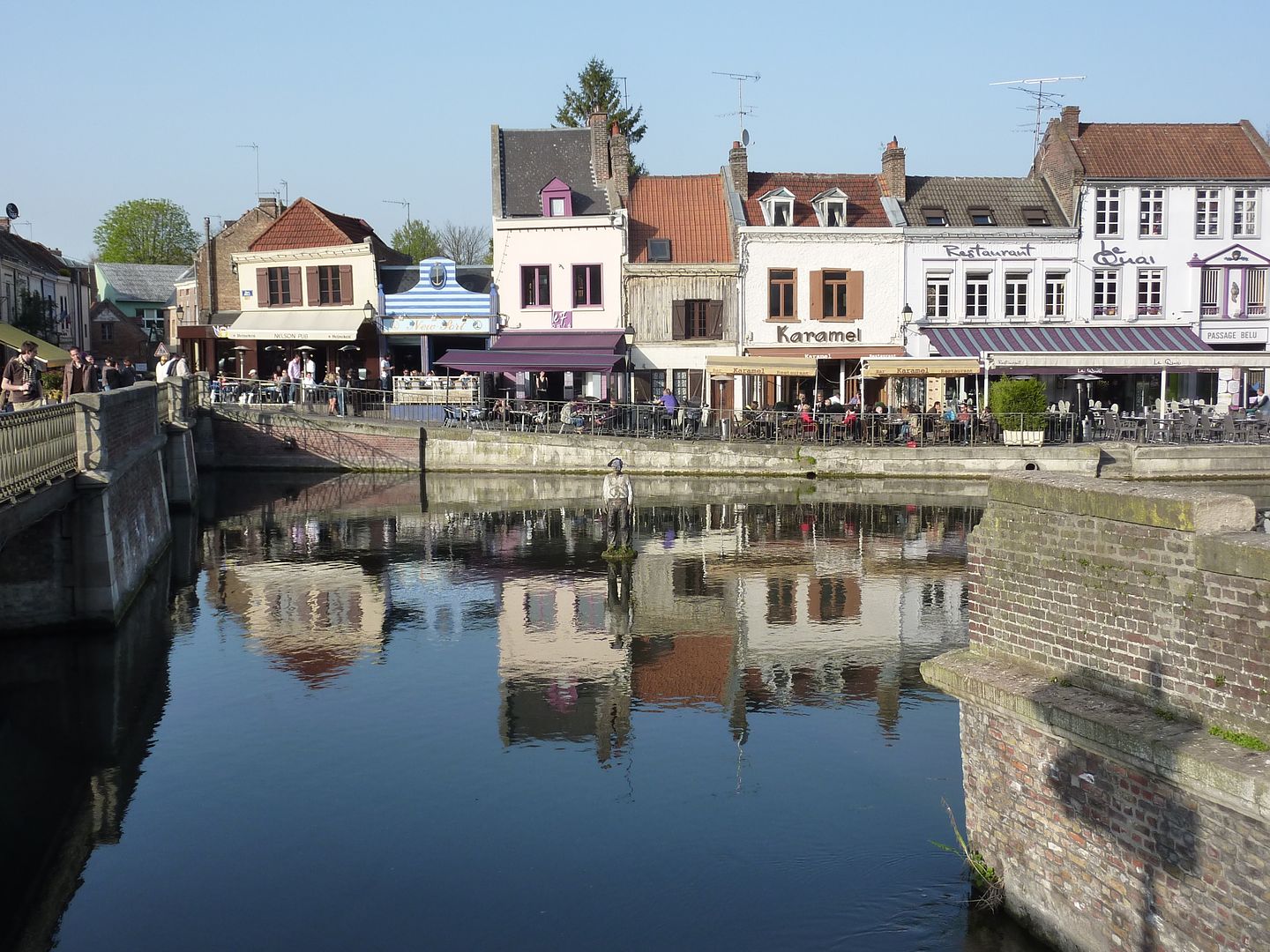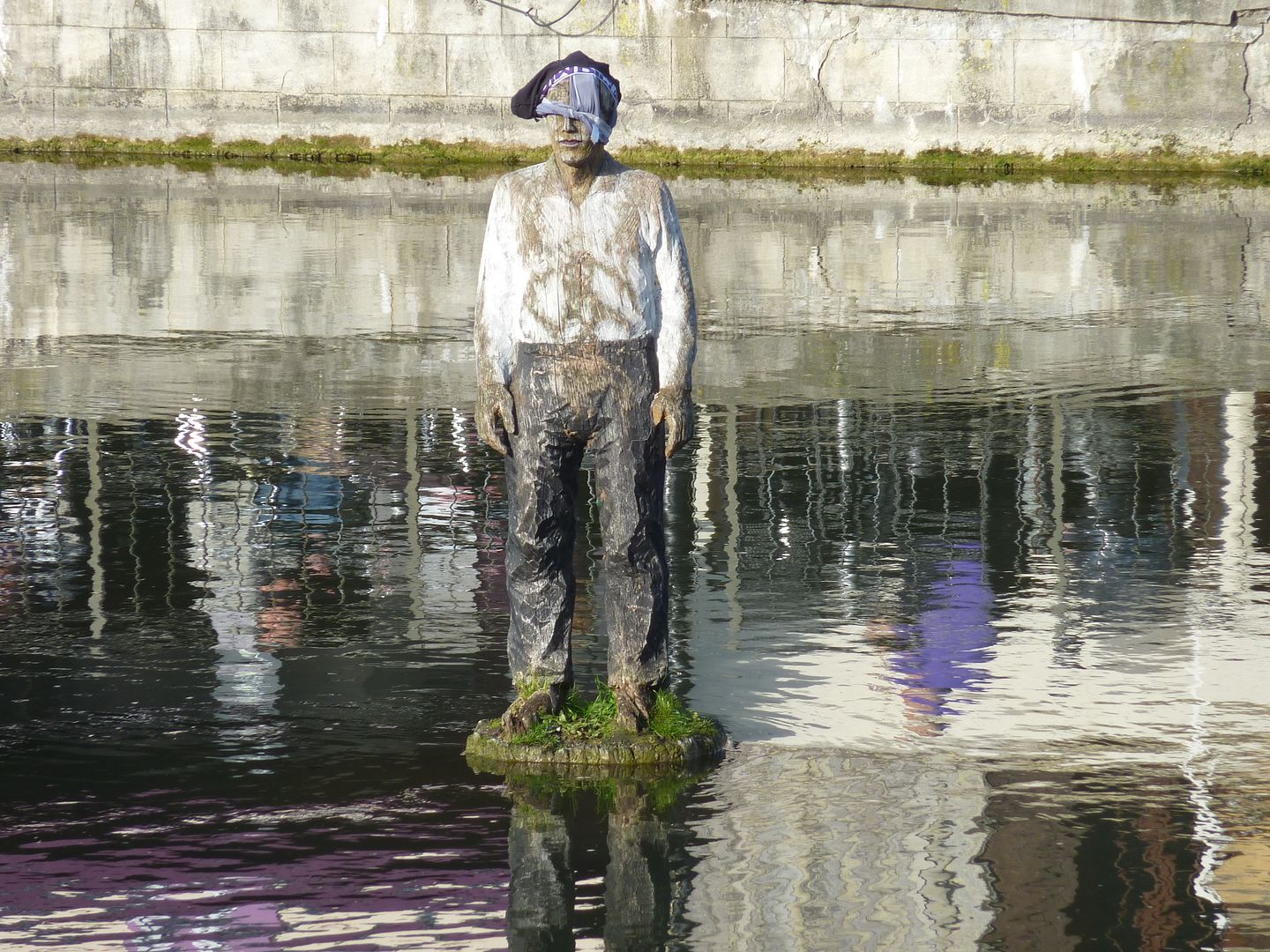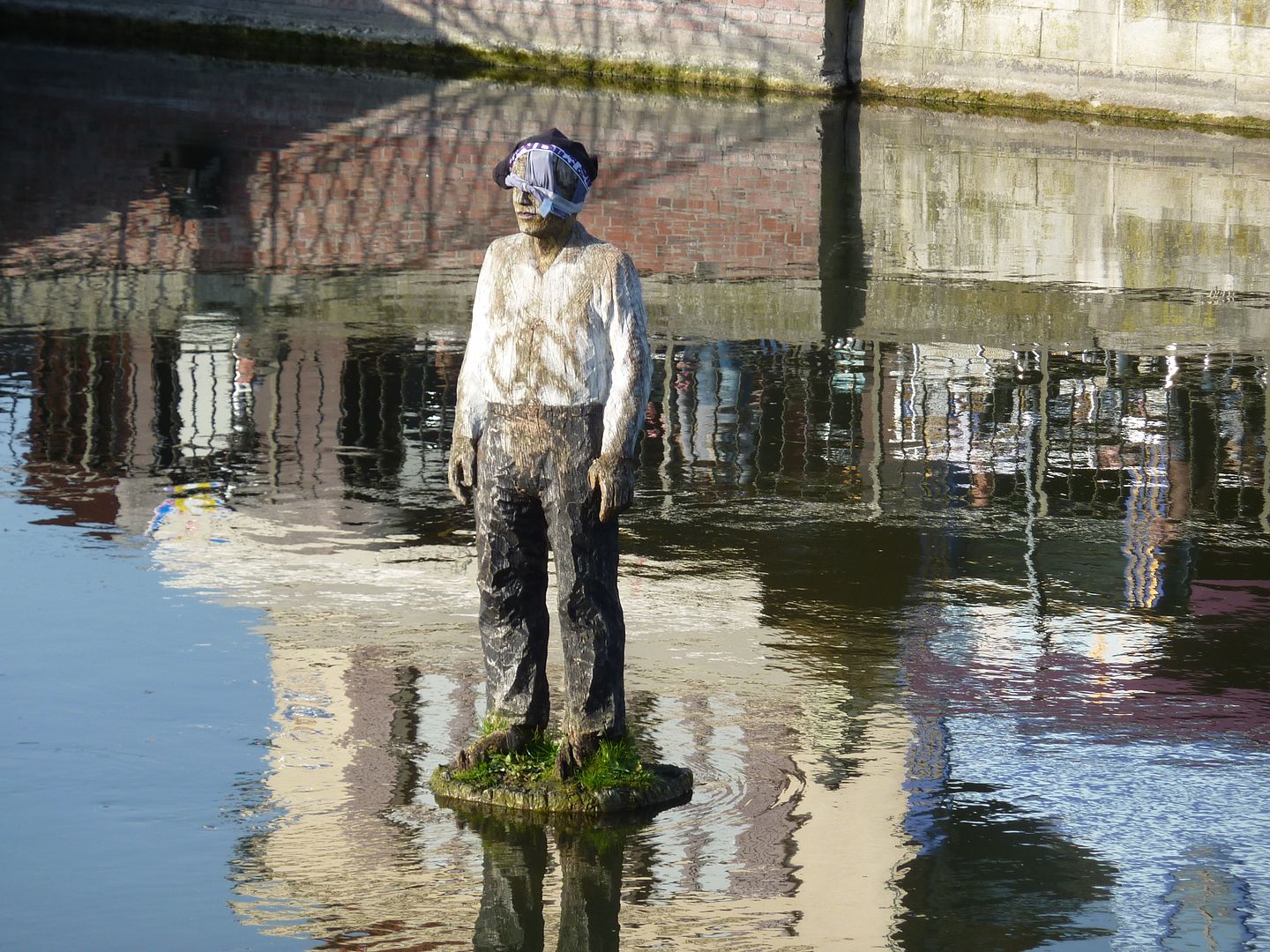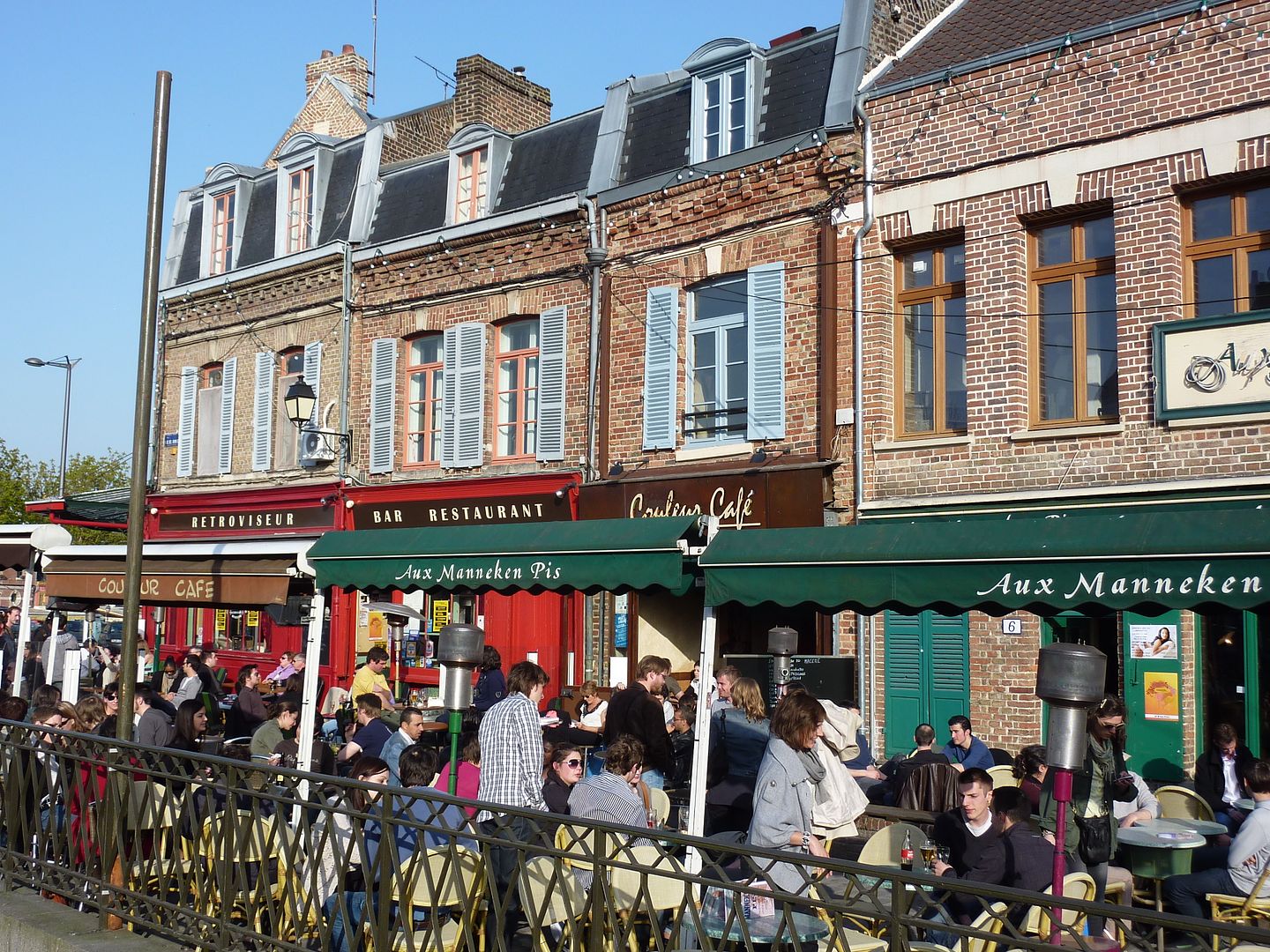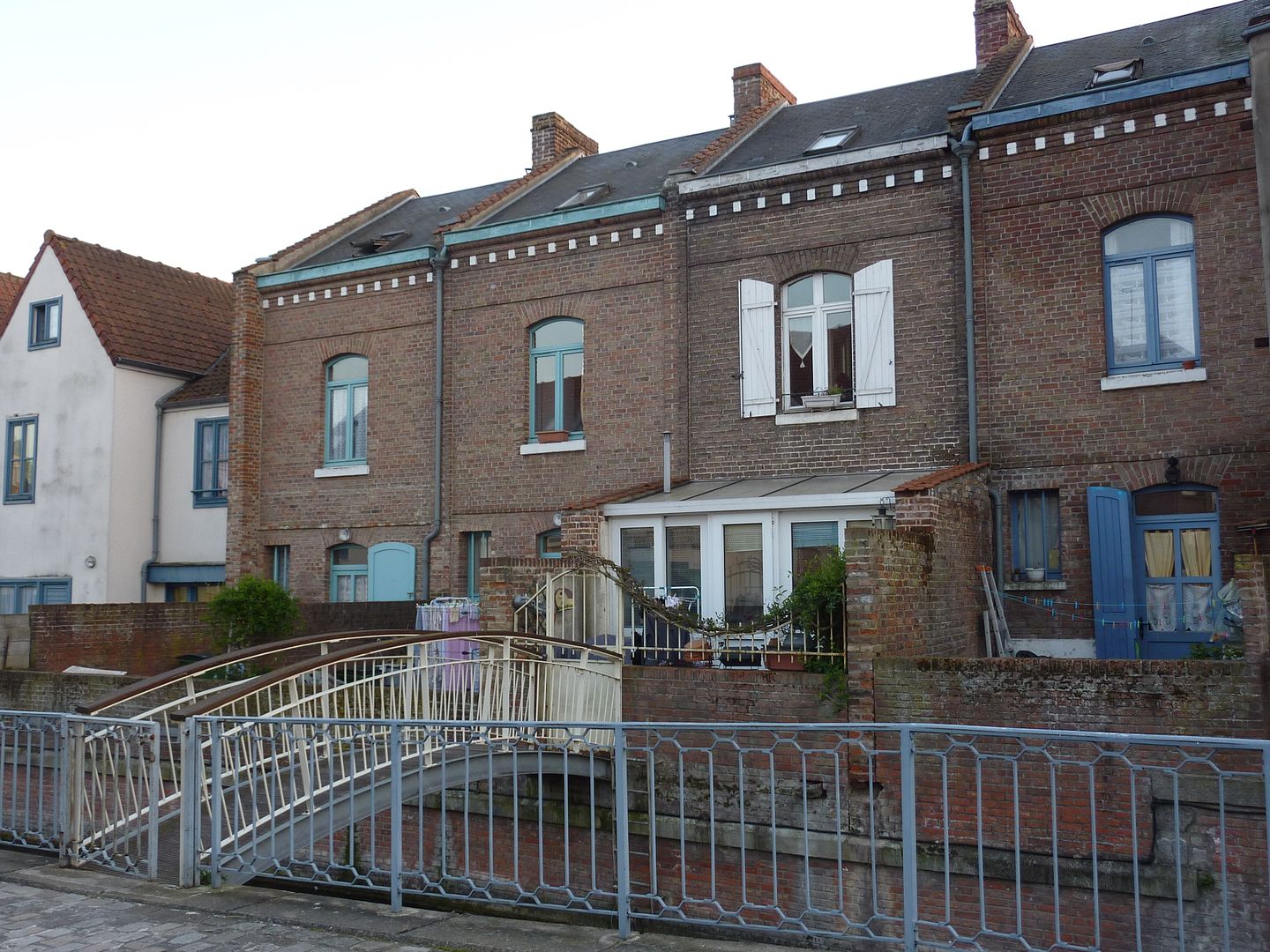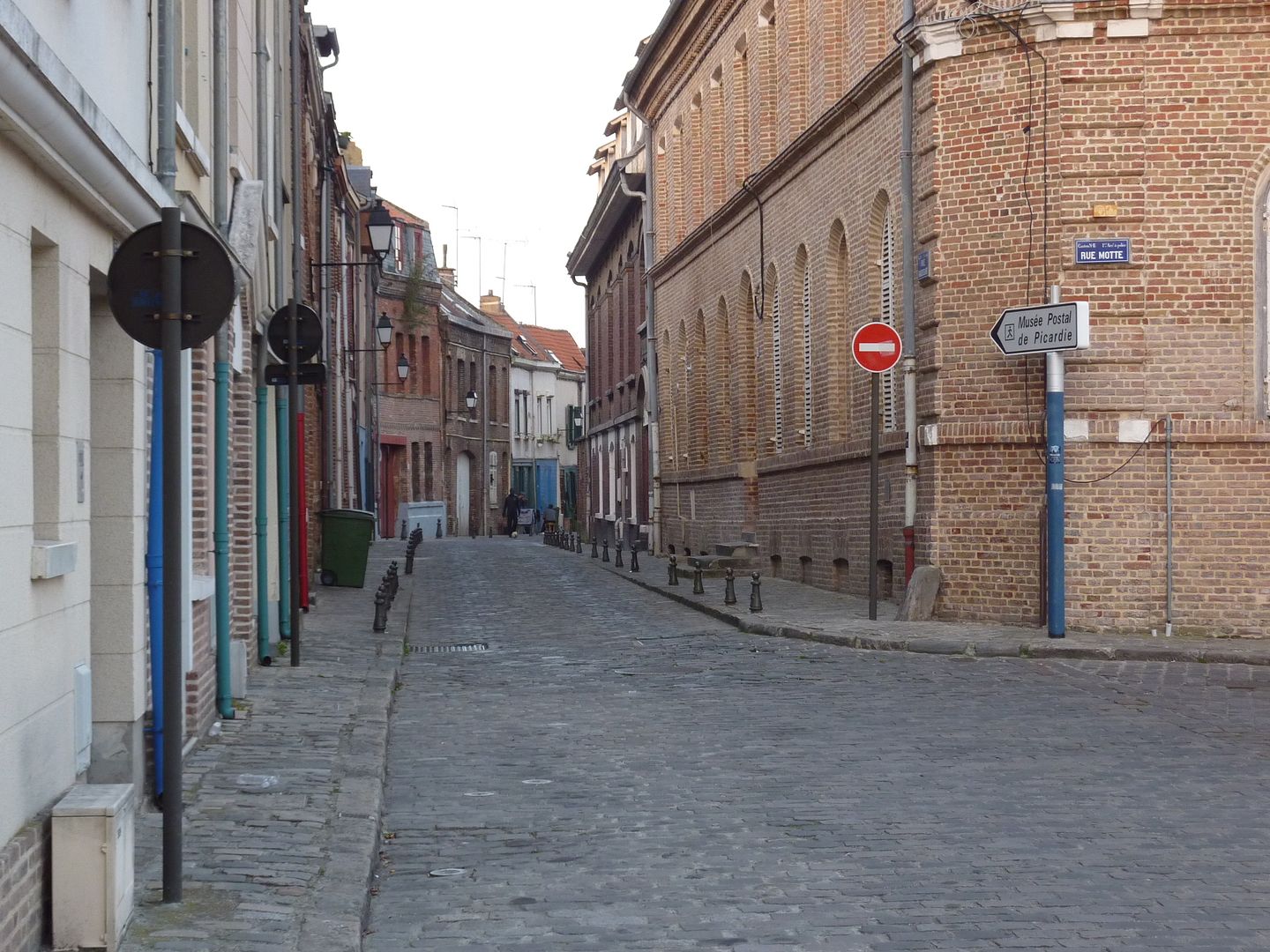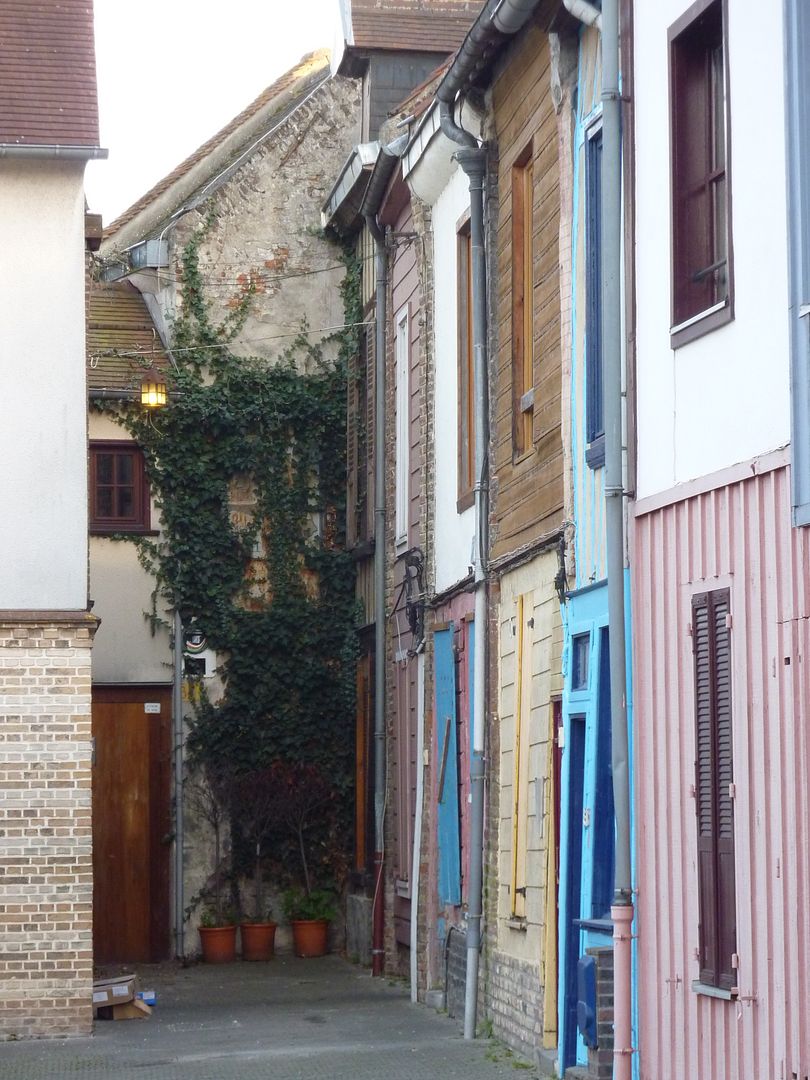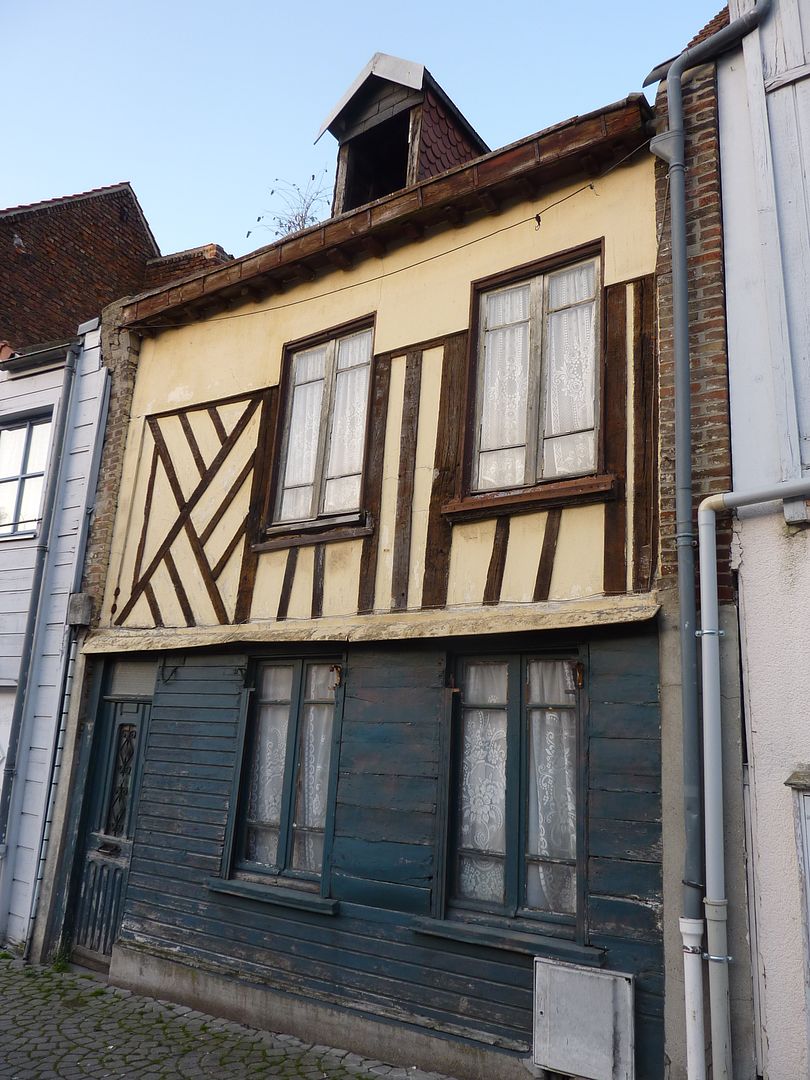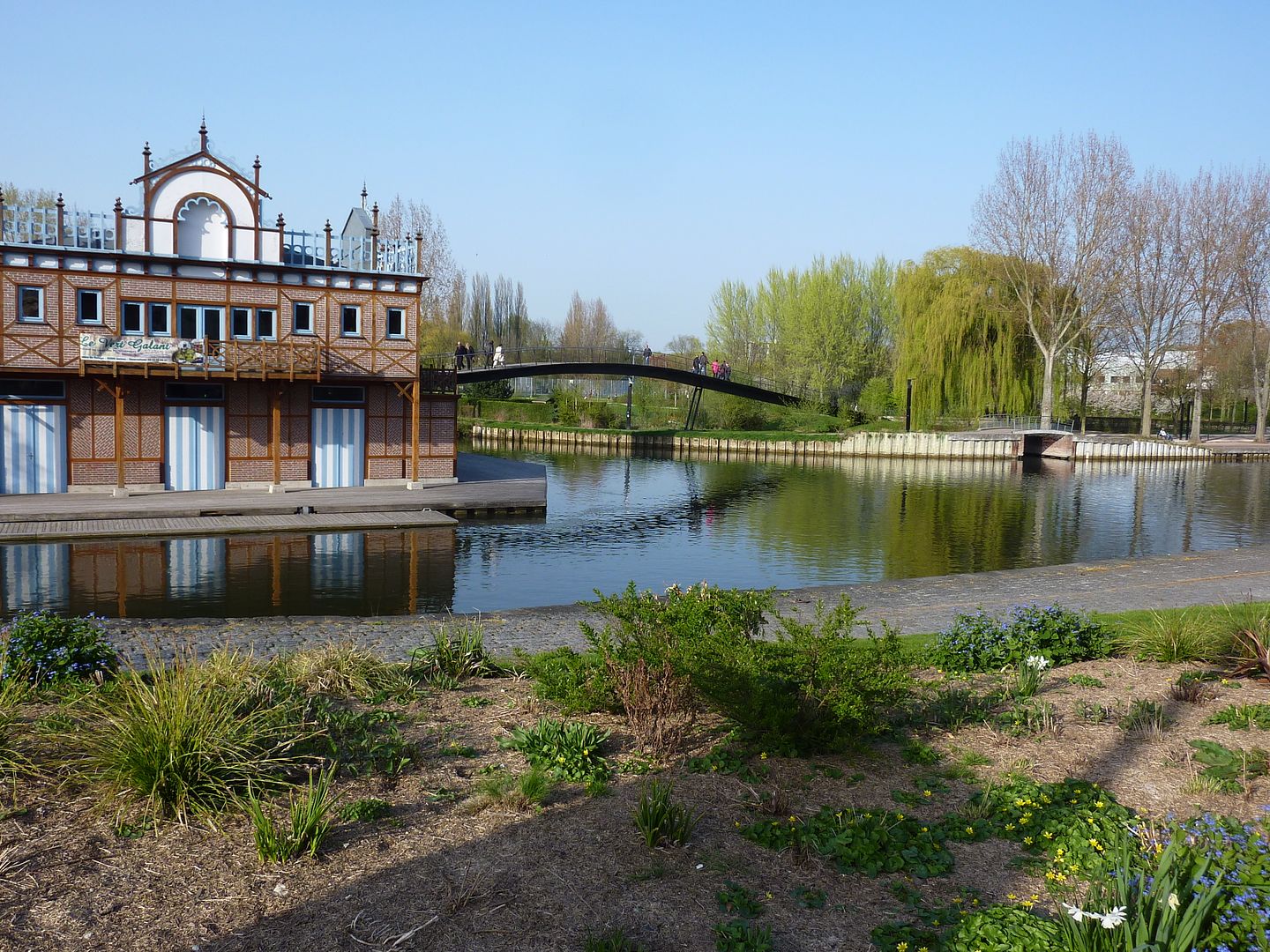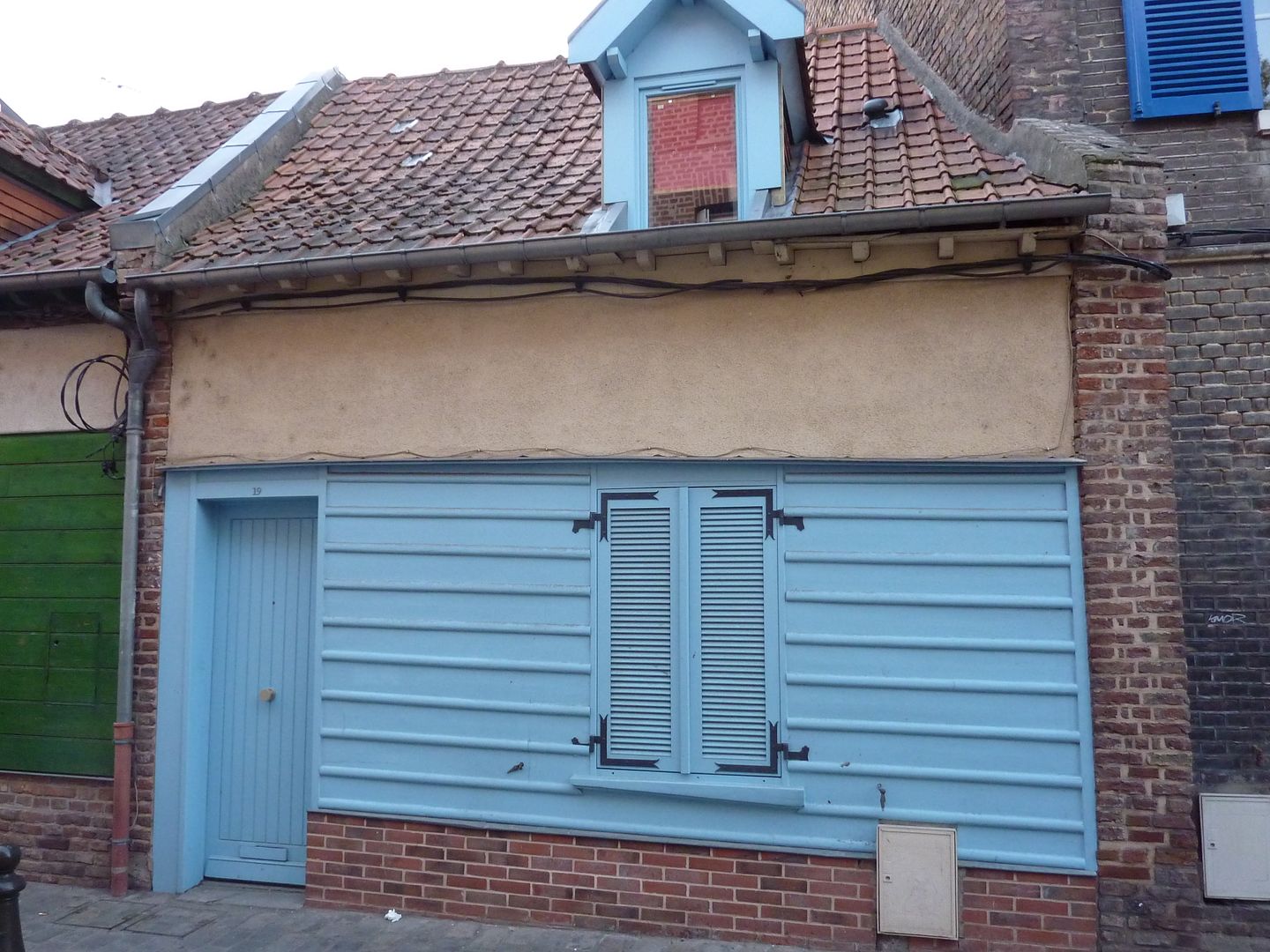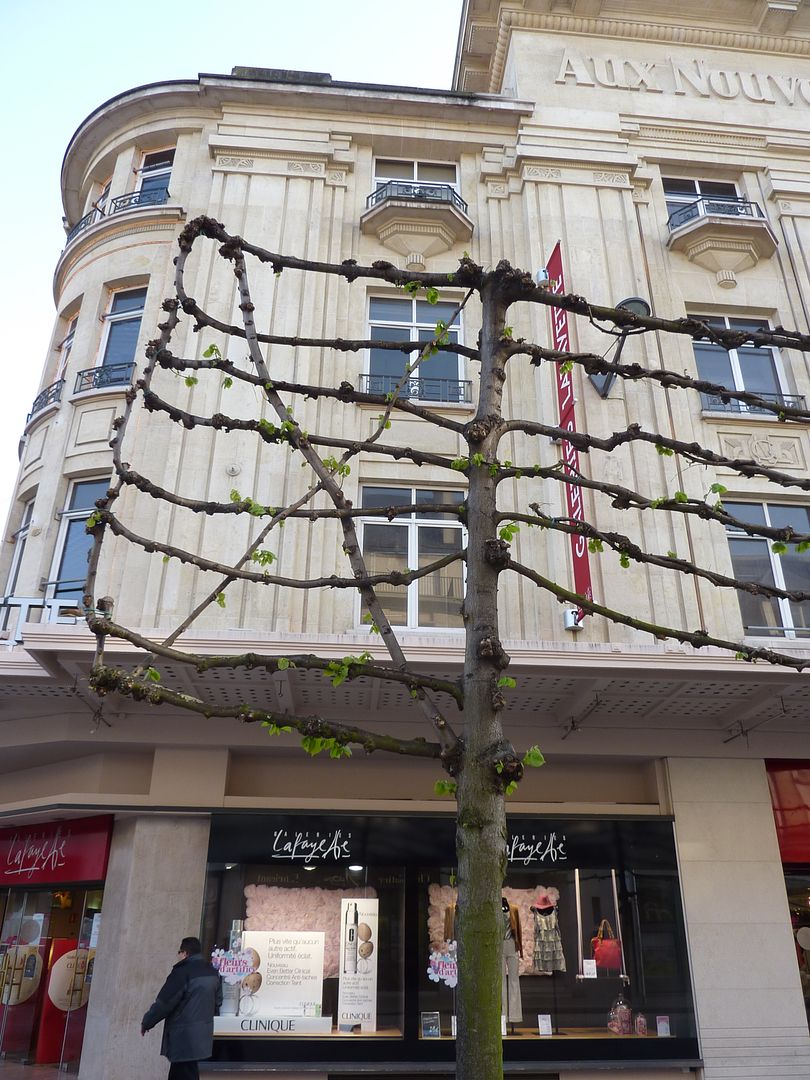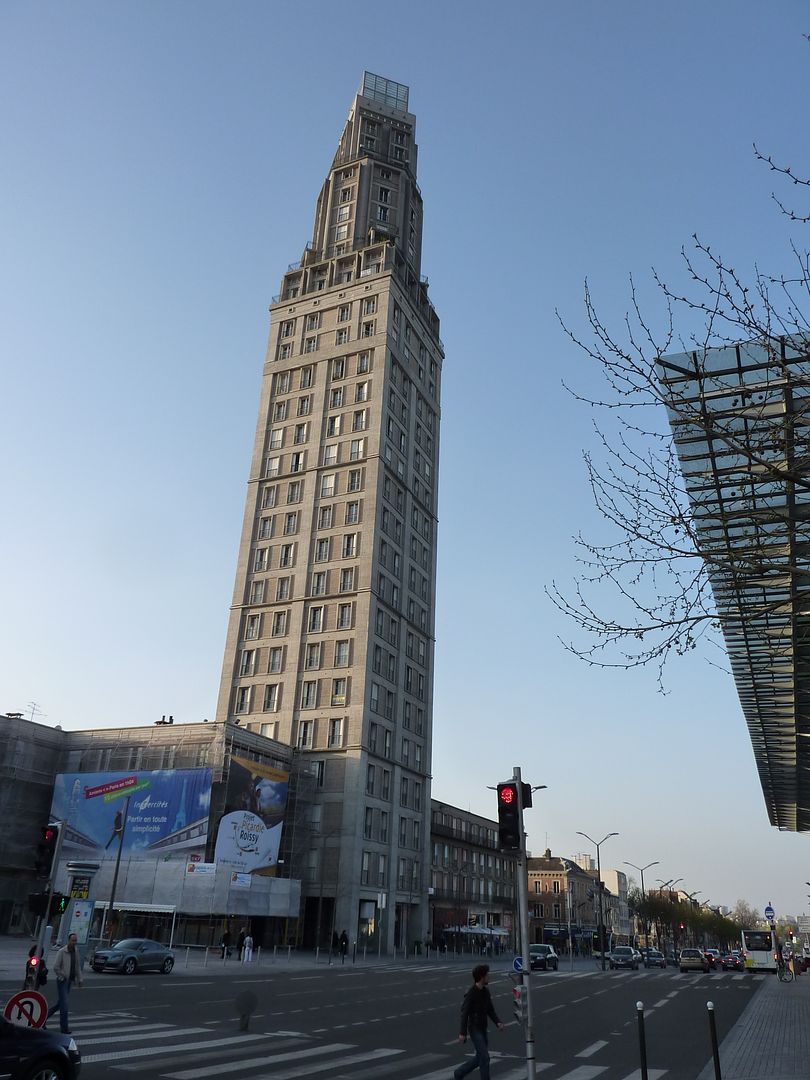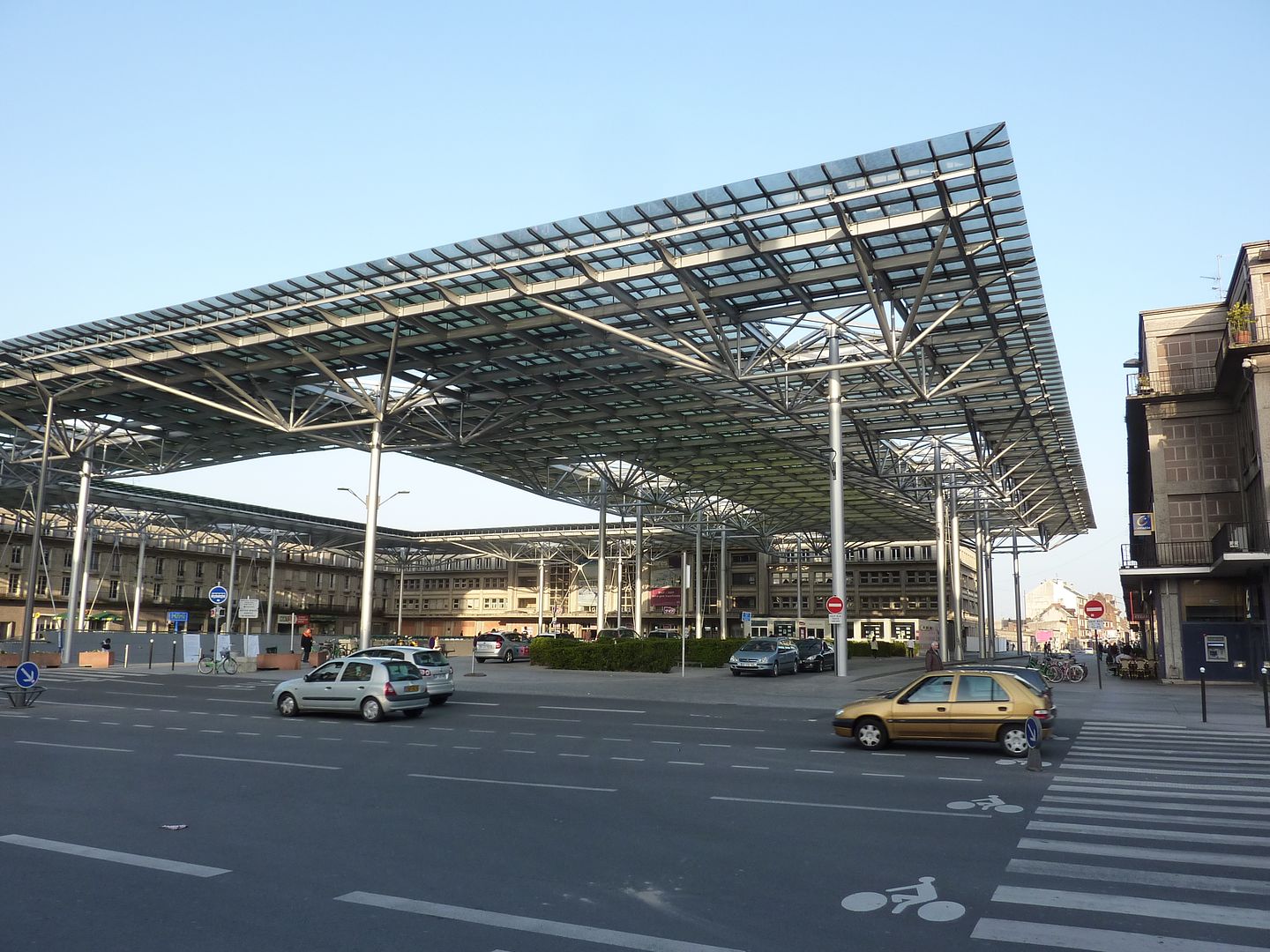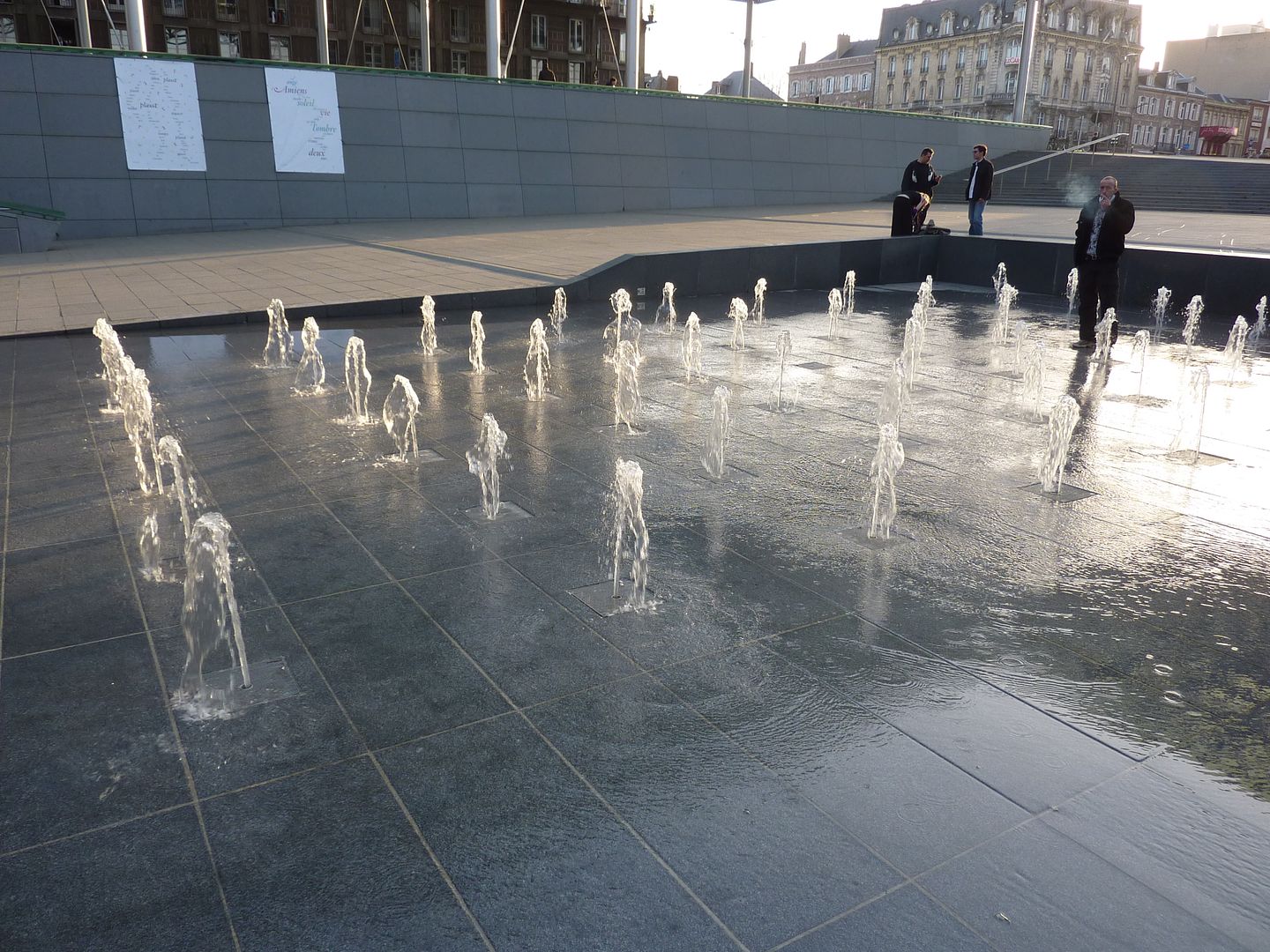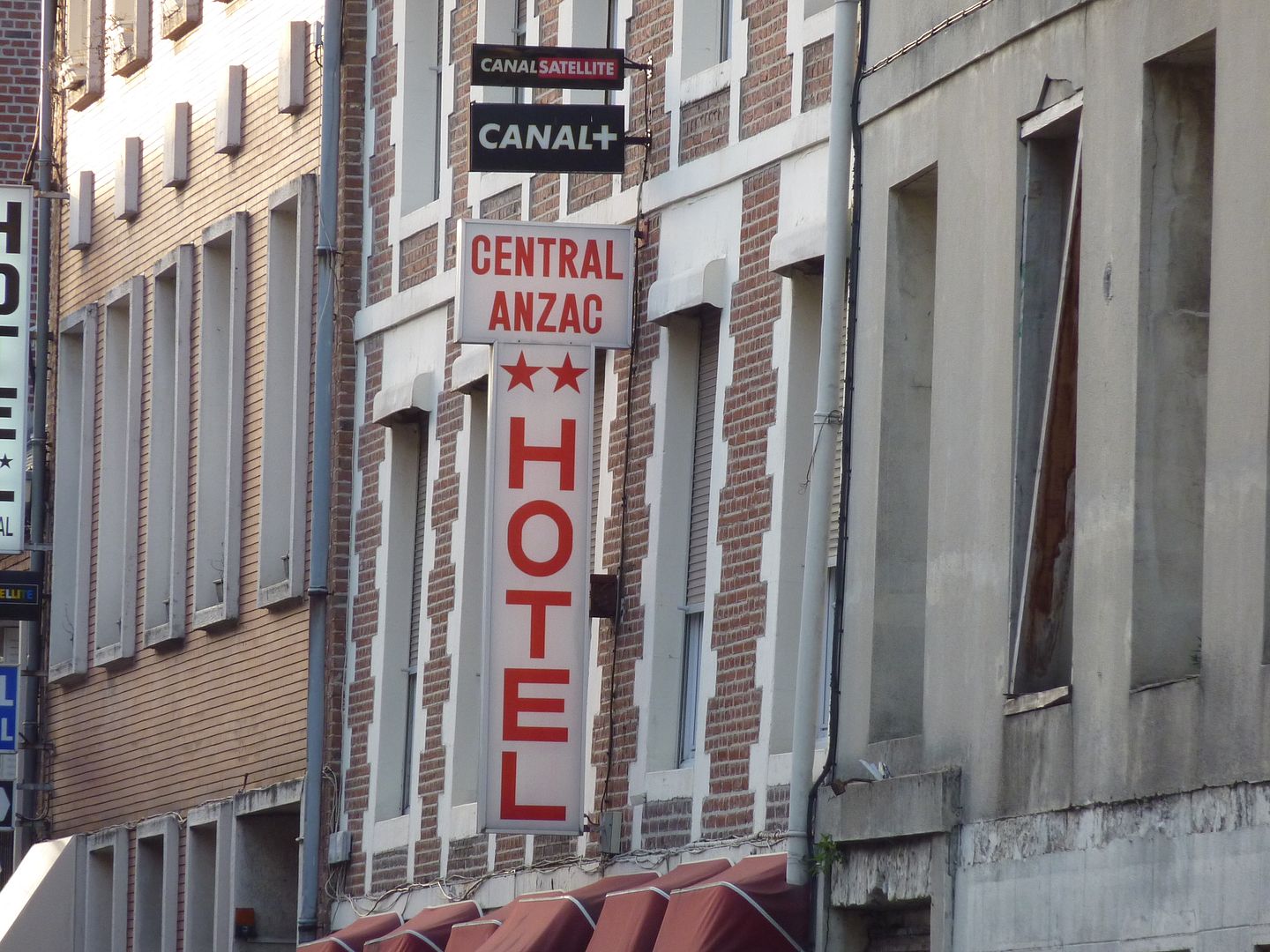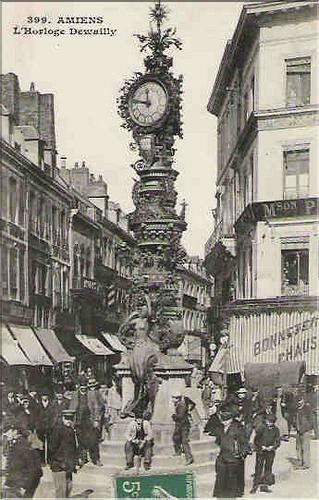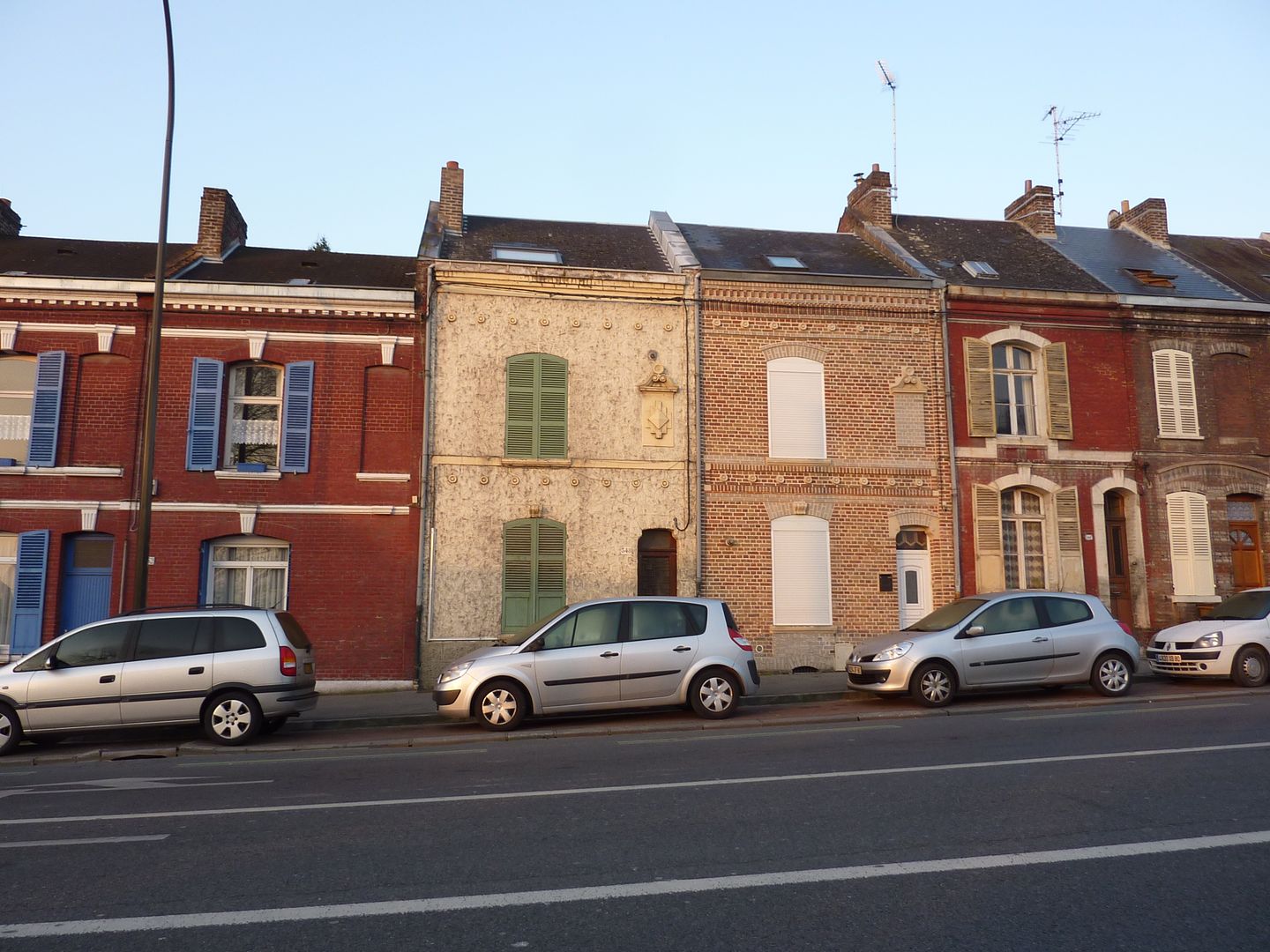|
|
Post by Deleted on Apr 20, 2010 13:00:48 GMT
Even the French do not really know Amiens. They know it possesses the largest Gothic cathedral in France (200,000m² of interior space) and that it sits in wetlands that suffered greatly during the wars, but that's about it. Generally, only the people of northern France have ever been there, because the people from the south wouldn't dream of going anywhere north of Paris -- terrible, cold weather and architecture that makes them feel uncomfortable. I like it that way, because it is the cities of the north that I prefer, and they are rarely overrun with tourists. Plenty of British, Dutch and Belgians of course, but generally just stopping off on their way south. It is rather surprising that Amiens remains so charming, because it was leveled by Germans bombs and artillery in March 1918 and before it was even completely rebuilt, it was bombed by the Germans in June 1940 and then by the British in 1944. At the end of WW2, 60% of the city had been leveled again. The cathedral was mostly spared both times. The German Imperial army chose it as a target in July 1918, but at the insistence of Pope Benedict XV, they stopped before much damage was done. It is interesting to think that so long before the internet or video, information could still travel fast enough a century ago when something was really urgent.   main train station - only the façade remained standing  Nouvelles Galeries department store A report after all of the bombings in 1918 stated that the only buildings still emerging from the ruins were the cathedral, the city hall, the courthouse and the main post office. The municipal theatre was destroyed, the business district and plenty of churches, too: St. Martin, St. Honoré, St. Pierre, St. Jacques, St. Germain. Not much better after World War 2... But what about Amiens in 2010? I'll get to that. |
|
|
|
Post by Deleted on Apr 20, 2010 13:31:32 GMT
I must immediately confess that I did not spend all that much time in Amiens, since I didn't arrive until about 16:30. That makes me just another one of the brief tourist passersby. By the time I parked the car and got my bearings, the cathedral was closed of course. Luckily, it is not too shabby a sight even from the outside. I noticed that this place seemed even more devoted to Judgement Day, hell and demons than most of these places. All of the saints stood on little pedestals under which small visions of hell tickled their feet. more coming up... |
|
|
|
Post by Deleted on Apr 20, 2010 15:33:43 GMT
Just fantastic, K.
It's mind boggling thinking about how long it would have taken the sculptures to create and crave the statues and artwork. Those black and white pictures really take you back.
|
|
|
|
Post by fumobici on Apr 20, 2010 15:38:04 GMT
Beautiful photos. Can you even imagine a protestant church decorated so mischievously? Me either.
|
|
|
|
Post by onlymark on Apr 20, 2010 15:53:42 GMT
Isn't it the thing when you realise you never have enough time? I'm thinking that I've often passed through France but always going somewhere else, Spain. Yet I always know in the back of my mind I ought to spend a lot more time there exploring. Seeing things like this make me want to give it all up for several months, get a car and just rattle around.
|
|
|
|
Post by Deleted on Apr 20, 2010 17:49:00 GMT
Scouts and a skaterboy soaked up the last rays of the April afternoon. Across from the cathedral was an interesting building. I mention it mostly because on the left side of the cathedral was a modern building which I refused to photograph since it clashed so shockingly with the rest. I just cannot imagine how such things were ever allowed, because in both Rouen and Reims and probably some other cities, there is the same thing -- somebody managed to get a building permit in the late 60's, early 70's and decided that the cathedral square was the perfect place to build an abomination. When the cathedral was renovated in recent years (actually, they haven't finished all of the sides yet and I saw that the schedules continues until 2015), one of the things that was rediscovered was that all of the statuary on the front was not its natural beautiful stone color in medieval times -- there were traces of colourful paint everywhere. While it was out of the question that the cathedral be repainted to conform to the original style (yuck!), it was felt that something should be done to allow people to see how it used to look. So every night in June, July and August, the front is illuminated to show how it used to look. I have pretty much promised myself that I will take a trip to Amiens this summer just to see that. The intricacy of the projection plate that must be used to do this is probably not on the same scale as that of building a cathedral but still, wow, what a lot of work to calculate each colour! Okay, I had sucked just about all of the juice I could out of the cathedral for today, and it was time to move on. On the right side of the cathedral (not the side with the horrible modern building), there were eating establishments that implied that they awaited an international clientele. A pleasant park behind the cathedral connected the area to the next area of interest. |
|
|
|
Post by bixaorellana on Apr 20, 2010 18:44:20 GMT
Gad, the photos of the wars' devastation make me want to weep even today. Maybe with the renovation of the cathedral and such projects as the summer illumination, there will be a move to do something to the "abomination" on its square. Looking at the photo of the buildings across the square, it would seem possible to fake something acceptable. That last photo, of the park, could be entered in a "guess the country" contest. It's certainly beautiful and green, though. Because I'm too lazy to look it up myself -- what's the date of the cathedral, please? Also, after viewing this extremely interesting thread, I went to look at your report on Le Havre again. Do you know when and how the re-building was started in Amiens after WWII? |
|
|
|
Post by Deleted on Apr 20, 2010 19:18:15 GMT
In just a few years, a municipal bicycle service has become a must in any French city worthy of the name. Amiens is no exception. (Population 136,000) Just below the cathedral (there is a flight of steps to descend from the park), is the Saint Leu area, which has become the fashionable district of Amiens since the 1990's even though it was a rundown poor area in the past. Starting in the 1980's the municipality began renovating the area and people were drawn in like a magnet, due to the winding canals and funky feeling. The streets are quite narrow, and pedestrians have the priority. Being the way I am, I was first attracted to the places that had not yet been renovated and which were in dire need of immediate improvement. In some cases, the decrepit building had already disappeared, leaving a ghost behind on the walls of its neighbours. This very same street was appallingly untouched on one side while the other side showed the result of careful renovation (and the French paint police which make sure that the buildings remain in harmony -- you cannot paint your house any colour at random in France). Many streets had small canals on the back side. This formerly poor district was the home of clothmakers and dyers in olden times, since both professions required huge amounts of water. On one of the principal canals, the old houses have been transformed into popular and very fashionable cafés and restaurants. This boy in the water was staring at his girlfriend on the wall across the way. In any case, it was a very balmy evening for April in northern France. (more?) |
|
|
|
Post by Deleted on Apr 20, 2010 19:37:45 GMT
Bixa, the current cathedral was built from 1220 to 1288, which is super fast. It almost collapsed in 1498 but an architect was able to fix it in time.
It was mostly spared at the Revolution (perhaps thanks to its quirkier than usual sculptures) and was transformed into the Temple of Reason and Truth. Naturally, the ubiquitous Viollet-le-Duc renovated it over a 25 year period in the 19th century. He added some of his usual unauthentic touches, but who cares? It looks pretty good to me.
|
|
|
|
Post by Deleted on Apr 20, 2010 20:00:54 GMT
In so many ways the area reminds me of Montreal. Even down to the public bike rentals. I wonder if that's where they got the idea from?
|
|
|
|
Post by Deleted on Apr 20, 2010 21:21:15 GMT
I walked away from the bar zone to see some more of the residential areas. This part of France is the centre of the lacemaking industry, which explains why you can see some elaborate lace curtains in some of the windows. Some of the buildings were clearly low income housing and probably the first elements of the renovation plan in the 1980's. Nevertheless, the view was a bit surprising when one delved into the buildings to see the back lanes. It was bucolic enough for me to want to see a few grazing sheep and some chickens wandering around but no such luck. |
|
|
|
Post by gusm on Apr 21, 2010 3:59:02 GMT
Great photos and commentary. Yet another place I want to visit.
|
|
|
|
Post by gertie on Apr 21, 2010 4:59:14 GMT
I always imagine a leaning man emerging from the houses that lean or who's doorways lean, sort of like the old faerie tale of the crooked man in the crooked house. ;D
|
|
|
|
Post by bixaorellana on Apr 21, 2010 5:43:59 GMT
That is just out of this world -- thank you!
There are so many surprising things. I really like the way you included several photos of the renovated house facades & their streets -- it gave a much fuller idea of the place than a single "picturesque" shot would have. And yes to "bucolic". Wow, it would be impossible to guess some of those areas are part of a city.
What a shame you couldn't get inside the cathedral. On such a clear bright day, the stained glass windows would have been glorious.
There is no traffic shown in your pictures, and few pedestrians, but lots of customers at the cafes. Is traffic diverted away from the center of the city?
|
|
|
|
Post by Deleted on Apr 21, 2010 6:06:56 GMT
Amiens is the third 'youngest' city in France in terms of population, and that is due to the large Université de Picardie Jules Verne , named after the most famous writer born in Amiens. One of the first things that I noticed was that it clearly attracts large numbers of African students, who seemed completely assimilated into local life, while African culture has clear rubbed off on the locals, too, as one can see from some of the cafés and cultural activities. University buildings always tend to be quite functional, but I nevertheless appreciated the way some of the buildings embraced their location along the canals. 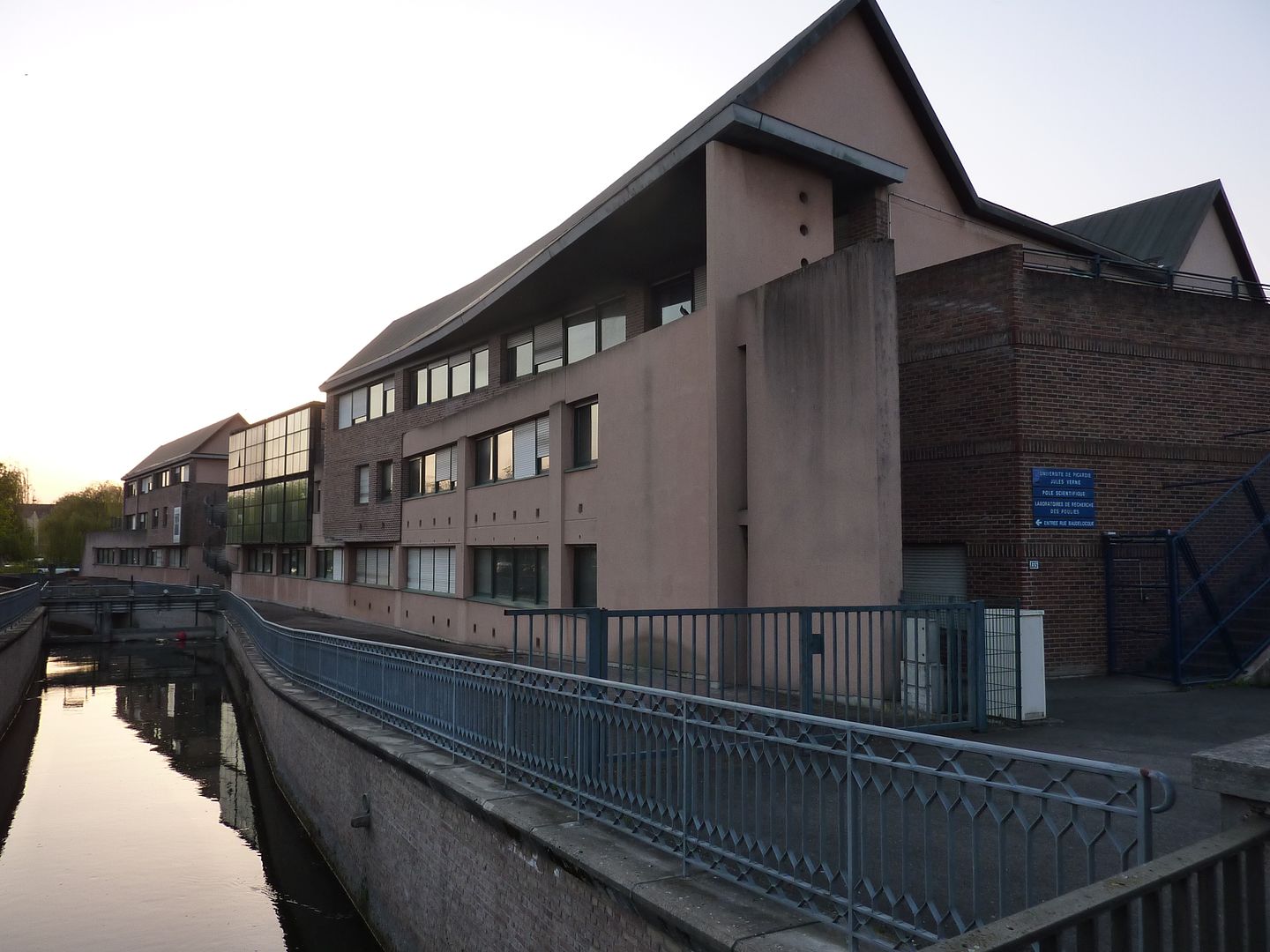   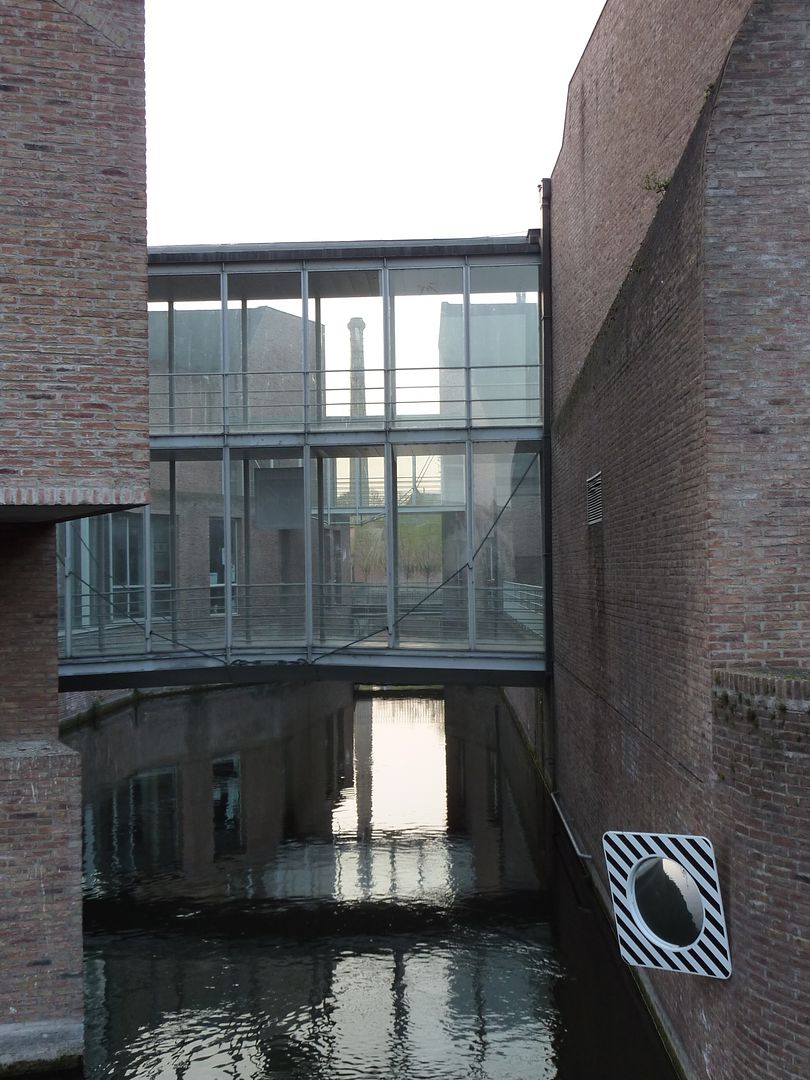 Clearly there is some boat traffic at certain times if there is even the need for a convex mirror to see around the corners. Today, however, only ducks were patrolling the perimeter of the campus. It was Saturday evening, and students are the same the world over -- here was a bar where a big group had gathered to drink beer along the canal. There were also other nearby bars to cater to the night owls. |
|
|
|
Post by hwinpp on Apr 21, 2010 7:03:18 GMT
I don't think I've ever stopped in Amiens, just passed through. Looks like I missed something.
I was wondering where that row of bars and restaurants were when I saw a photo yesterday but I don't remember where.
|
|
|
|
Post by onlymark on Apr 21, 2010 7:08:18 GMT
K2, picture 2 of this last set shows 'Cafe Bissap'. As far as I know 'bissap' is a tea type drink made from dried hibiscus flowers and the only reason I know it is because here in Egypt it's called karkade. I usually have it ice cold in the summer. Maybe the owners are from Senegal.
Just thought I'd slip that in to show how clever I am.
|
|
|
|
Post by Deleted on Apr 21, 2010 13:40:25 GMT
Bixaorellana asked earlier about the rebuilding of Amiens, and I am getting to that now. The first reconstruction of Amiens begain in 1925 after several delays, including the French government rejecting the request of Amiens for special indemnities. So many things had been destroyed in WW1 that 7000 destroyed and 3000 damaged buildings did not make it to the priority list. Reconstruction was far from complete when WW2 started, and it is very strange to mention the fact that a new reconstruction programme was designed by the German occupiers in 1942! Such was not to be after the British bombings, so the real reconstruction had to wait until after the war, under the plan of the remarkable August Perret who left something in town that still stuns everybody. But we'll get to that later. Anyway, I figured that I needed to visit the normal main business district to get an idea of what Amiens looks like to its normal everyday residents and not the tourists, students and bohemians of the Saint Leu district. The main pedestrian shopping street shows some of the remnants of the art deco period between the two wars, even though the use of the buildings has changed since then.  this is a shoe store   this is the restored façade of the old destroyed municipal theatre, now a bank agency Do you remember the photo of the ruins of the old Nouvelles Galeries department store, destroyed in 1918? It was more or less put back together and is now the Galeries Lafayette department store, with a row of tortured examples of French gardening running down the street. Most of the downtown area is visibly in the 1950's utilitarian style. ("We need new buildings right now! No need for anything fancy!") A few other things have been restored. (soon: the conclusion) |
|
|
|
Post by Jazz on Apr 21, 2010 15:17:14 GMT
A fascinating look at a town I've barely heard of and would not have thought to visit. Once again, you give a beautiful feel for a place and its' life. The historical context of the two great wars is moving and horrifying. It is very interesting how news was somehow conveyed at that time when it was urgent. The people of Amiens must be resilient to have recovered as well as your photos suggest. I cannot imagine that the one facade of the beautiful cathedral was once painted! I would have loved to have seen this, but would definitely 'settle' for the light show. The homes along the canal are modest and welcoming, and I would like to live in one with the spiral exterior staircase for a short time. That they were the homes of dyers in olden times makes me think of rue des Teinturiers in Avignon. Great design to place some of the university buildings on the canals. It surprises me that the African students have assimilated so easily here. Why do you think this is the case, when there is so much turmoil in Paris? I really do respect the incredible patience and ability of the people of Amiens to try, reconstruct, be destroyed again, reconstruct again. Oh my god. When I was in Budapest about 10 years ago, there remained a disturbing amount of rubble from WW2. A wonderful thread, with so much to absorb. Thank you, Kerouac.  |
|
|
|
Post by Deleted on Apr 21, 2010 17:02:13 GMT
I don't think there is a lot of turmoil at all in Paris. Obviously there are some problems, but most of the problems have been in the media itself, always looking for inflammatory issues.
Anyway, back to Amiens, as soon as I get organized...
|
|
|
|
Post by Deleted on Apr 21, 2010 18:03:44 GMT
Anybody driving into Amiens for the first time has an absolutely WTF moment when they see a strange thing on the horizon, and it just keeps getting bigger and bigger. Who could possibly have built such a thing all by itself in a city like Amiens? Paris has some tall buildings, Lyon has some tall buildings, but no other city in France has any skyscrapers. Except for Amiens. Auguste Perret was in charge of rebuilding the train station area after the war. Everybody in any part of Europe that suffered urban bombings in the various wars knows that the train station area was always the part of the city that was the most completely pulverized. These days, they would hit the airports first, but back then it was the train station and all of the rail lines. So the train station district of Amiens is quite similar to what I showed in my Le Harve thread, but it has the amazing Tour Perret which towers over the city -- 30 floors high. It was the tallest building in Western Europe for about 20 years after its construction in 1952 (The Tour Montparnasse in Paris was built in 1972.). On top of that, it is just an apartment building. As much as the French love elaborate train stations in their cities, after having the station destroyed two times in a row, Amiens allowed Perret to build a totally utilitarian station. Just last year, a totally restructuring of the "place de la Gare" was undertaken with a futuristic thing to protect people from the elements, which is always an important consideration in northern France. The station is being redone also. It was a one level station and the esplanade in front of it has been converted to a large slanted plaza leading to a lower level. (But it isn't finished yet, so I don't know exactly what they are doing!) They have added a fountain of the sort I love -- totally accessible to allow you to wet yourself at will. This man was clearly very drunk but also very clearly enjoying himself as he got soaked. Across from the station were a lot of hotels, of course, and some of the names indicated a major part of the clientele of the region. Just on the road from the A1 autoroute to Amiens, I passed no fewer than 9 military cemeteries -- British, Canadian, Australian, French, German... Driving away from Amiens the next morning in the opposite direction, I saw just as many more -- Commonwealth, British, French, Canadian and even Chinese. Picardy is one of the regions the most soaked with blood. Night was falling, and my legs were a bit tired, so I decided to return to my car. I passed by the famous Dewailly clock. Did it survive the wars with its wonderful Jules Vernish details? Absolutely not! I don't know if it was destroyed (probably) or melted down to make shell casings (another reasonable possibility), but for the Millennium celebrations of the year 2000, it was completely recreated and put back in its original location. I was parked over by the lovely canal places. There was one 'fancy' restaurant that attracted me. Oh, I say 'fancy' but they had a menu (set meal) for 14.50€ and I saw that an à la carte menu would run about 30€. I saw that it was a "Somme Battlefield Partner." What does that mean? 10% discount? At the same time, I thought about how many people are always looking for "romantic" restaurant settings, and I couldn't help thinking that this particular table was about as romantic as you can get in Amiens, or in most other places. It overlooked the canal and the lovely lights of other restaurants on 'restaurant row' which were looking nicer and nicer as the daylight left the sky. (a few final remarks soon) |
|
|
|
Post by Deleted on Apr 21, 2010 18:16:58 GMT
So enjoying all these pictures, Kerouac. Those plants that run across on in a few of those pics, what kind of plant is it? Do you know?
|
|
|
|
Post by Deleted on Apr 21, 2010 18:26:53 GMT
It is some sort of tree, but I don't know what kind. Actually, one sometimes sees this sort of forced trellis effect on pear treees -- but they wouldn't put fruit trees in the center of a city. That would be madness.
|
|
|
|
Post by Deleted on Apr 21, 2010 18:29:37 GMT
I was wondering if it was some kind of fruit vine. I lived in Orchards for years and saw various kinds of vines. But yep, putting fruit up in the middle of city like that would be crazy.
|
|
|
|
Post by gertie on Apr 21, 2010 23:12:23 GMT
Those canals are just marvelous, I imagine in certain times of year it is quite lovely to boat along them. I can quite imagine myself with one of those homes with the staircase and a little boat tied up behind the house.  What magnificent pluck to rebuild yet again! |
|
|
|
Post by fumobici on Apr 22, 2010 2:52:19 GMT
Lovely, lovely glimpse into Amiens K2. Makes me quite want to visit.
|
|
|
|
Post by Deleted on Apr 22, 2010 5:56:17 GMT
Since I mentioned that the houses in the Saint Leu area were 'poor,' I thought I would show what the traditional 'normal' houses of Picardy look like -- they are built out of brick. |
|
|
|
Post by spindrift on Apr 22, 2010 18:08:15 GMT
Kerouac, thank you for this marvellous report on Amiens. It is so comprehensive that I feel I have no need to go there and neither do I want to. I should explain that when I was 18 I was incarcerated at a convent in La Fere, Aisne where I suffered endless asthma attacks, during the winter months, from the foggy, cold and wet weather. I can never forget those dreary days. La Fere is only 80 kms from Amiens. If I drive south to the Dordogne or Nice I go by the Le Havre route making sure I avoid Picardy  |
|
|
|
Post by Deleted on Apr 22, 2010 18:22:49 GMT
I thought of you when I posted this report and indeed thought that you might be the person the least attracted to returning to the region. And yet, it has become worth receiving a second chance.  |
|
|
|
Post by spindrift on Apr 22, 2010 18:24:31 GMT
Yes, I can see from your photographs that it might be worth visiting. Have you ever stopped at La Fere?
|
|
 I like it that way, because it is the cities of the north that I prefer, and they are rarely overrun with tourists. Plenty of British, Dutch and Belgians of course, but generally just stopping off on their way south.
I like it that way, because it is the cities of the north that I prefer, and they are rarely overrun with tourists. Plenty of British, Dutch and Belgians of course, but generally just stopping off on their way south.
















